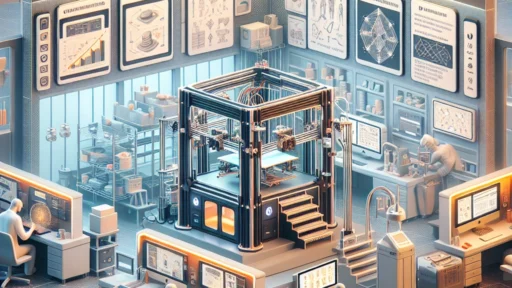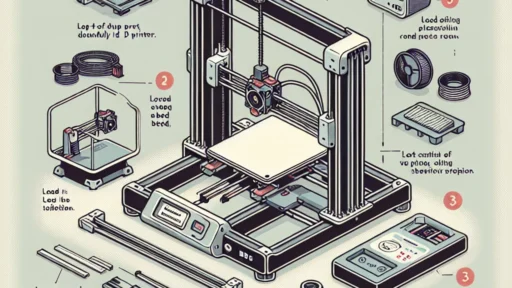Understanding Different Types of 3D Filaments and Their Uses
In the world of 3D printing, the filament you choose can be as crucial as the design itself. With a dizzying array of materials available, understanding the different types of 3D filaments and their specific uses is essential for anyone looking to print quality objects. This guide is here to break down some of the most common filament types, their properties, and where you might want to deploy them in your projects.
PLA (Polylactic Acid)
PLA is probably the most common filament, especially among beginners. Made from renewable resources like corn starch or sugarcane, it’s biodegradable and offers excellent print quality. One of its standout features is how easy it is to work with—PLA adheres well to the print bed, minimizes warping, and produces a good finish with vibrant colors.
Uses: Because of its safety and ease of use, PLA is ideal for prototypes, educational models, toys, and decorative items. However, it isn’t suited for high-temperature applications, so you wouldn’t want to use it for anything that might be exposed to heat.
ABS (Acrylonitrile Butadiene Styrene)
ABS is another popular filament, known for its toughness and resilience. This styrene-based polymer can withstand higher temperatures compared to PLA, making it a favorite for functional parts. It’s worth noting that it can produce fumes during printing, so using it in a well-ventilated area is essential.
Uses: ABS is great for functional prototypes, automotive parts, and even LEGO bricks. If you’re interested in creating items that will face wear and tear or exposure to heat and impact, ABS is your go-to filament.
PETG (Polyethylene Terephthalate Glycol)
If you love both PLA and ABS but wish they could join forces, PETG might be just the filament for you. It combines the best properties of both—offering the ease of printing from PLA with the durability and heat resistance typical of ABS. Moreover, it has excellent clarity, making it suitable for creating transparent parts.
Uses: PETG is widely used for food containers, mechanical parts, and any objects requiring a balance of strength and flexibility. Plus, it’s less prone to warping, making it a user-friendly choice for a broader range of prints.
TPU (Thermoplastic Polyurethane)
For those looking to venture into the realm of flexible prints, TPU is a fantastic option. This filament is rubbery and flexible, allowing for a wide array of applications. But take note: printing with TPU can be somewhat tricky due to its elasticity, which may cause issues with feeding through the printer.
Uses: TPU is perfect for phone cases, wearable technology, and any application that demands elasticity. If you need items that can bend or squish, TPU is a solid choice that can withstand considerable wear.
Nylon
Nylon is one of the strongest 3D printing filaments and is renowned for its durability and wear resistance. However, it can also absorb moisture, so keeping it dry is crucial for achieving optimal print results. It has a high melting temperature, making it suitable for functional parts exposed to stress.
Uses: Nylon is often used for mechanical parts, gears, and any custom applications where strength and flexibility are essential. If you’re looking at creating functional components that require a bit of give, this filament is worth considering.
ASA (Acrylonitrile Styrene Acrylate)
Similar to ABS, ASA boasts excellent UV resistance, making it particularly suitable for outdoor applications. Like its counterpart, it has a strong and tough composition but also comes with the added benefit of colorfastness in outdoor exposure.
Uses: If you’re crafting items for the garden, outdoor fixtures, or anything that requires durability in the sun, ASA can be an excellent choice. You’ll have the strength of ABS without the fading that can come from prolonged UV exposure.
Conclusion
With a variety of filaments available, each suited to different applications and strengths, the world of 3D printing beckons excitement and endless possibilities. As you move from hobbyist to serious 3D printing enthusiast, understanding these materials will enhance your projects and help you find the right filament for your specific needs. Whether you’re tinkering with prototypes, aiming to create robust functional components, or simply having fun with artistic designs, there’s a filament out there that is perfect for you. So, get printing, experiment with different materials, and let your creativity soar!






